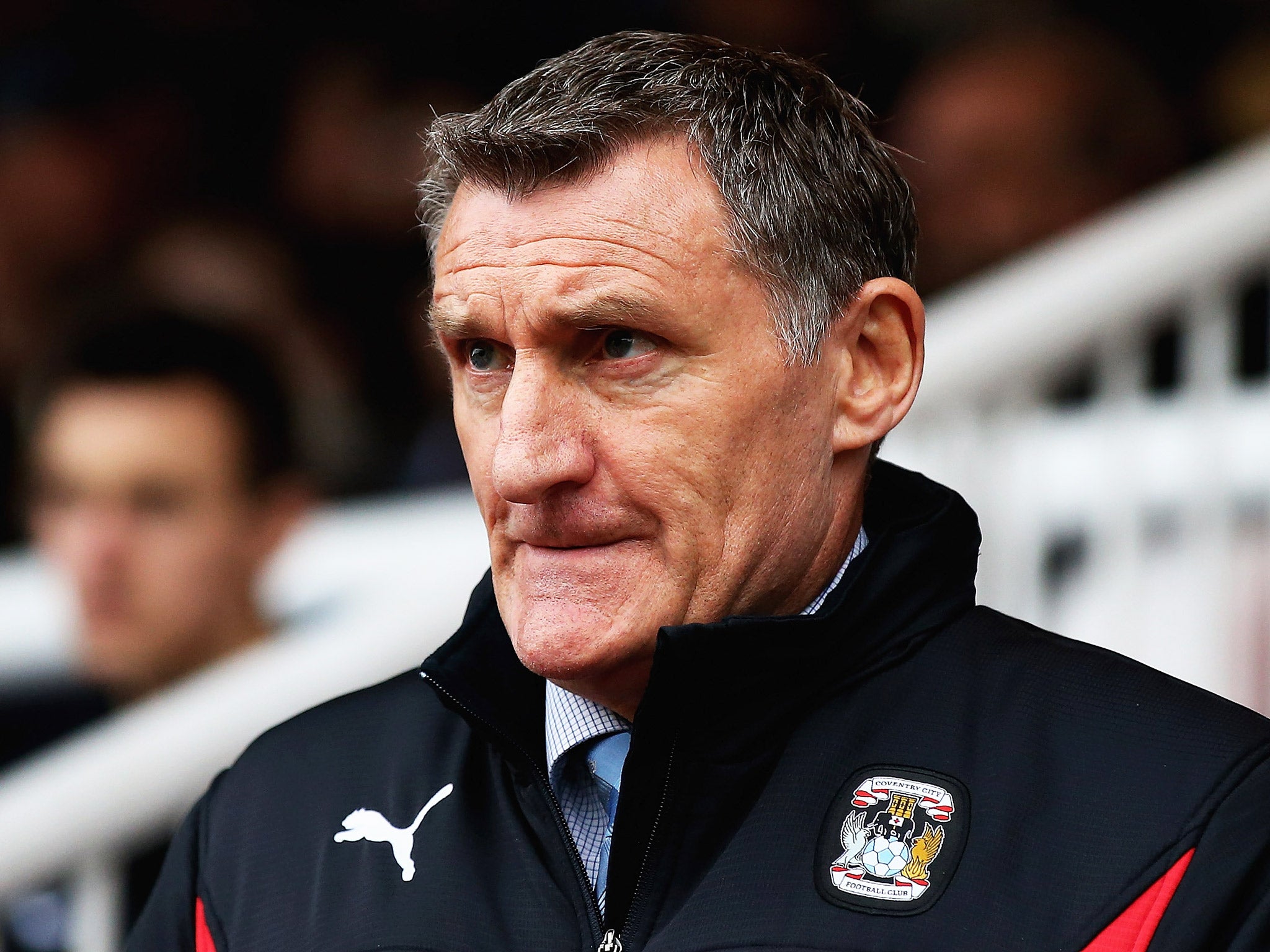Tony Mowbray enjoys a 'blank canvas' at Coventry - and then paints it
Life Beyond the Premier League

Your support helps us to tell the story
From reproductive rights to climate change to Big Tech, The Independent is on the ground when the story is developing. Whether it's investigating the financials of Elon Musk's pro-Trump PAC or producing our latest documentary, 'The A Word', which shines a light on the American women fighting for reproductive rights, we know how important it is to parse out the facts from the messaging.
At such a critical moment in US history, we need reporters on the ground. Your donation allows us to keep sending journalists to speak to both sides of the story.
The Independent is trusted by Americans across the entire political spectrum. And unlike many other quality news outlets, we choose not to lock Americans out of our reporting and analysis with paywalls. We believe quality journalism should be available to everyone, paid for by those who can afford it.
Your support makes all the difference.What a difference a few months have made for Coventry City. When the Sky Blues lost 3-1 at home to Crewe Alexandra on 25 April, they were in danger of relegation to League Two – only averted by a final-day victory at Crawley. When Coventry hosted Crewe once more on Tuesday night, by contrast, a 3-2 victory made it three wins out of three for Tony Mowbray’s early League One leaders.
It helps to have acquired the scoring threat of 18-year-old Adam Armstrong, who has five goals already just three games into his six-month loan from Newcastle United, but as Mowbray leads The Independent on a tour of the club’s training ground, another factor quickly becomes apparent.
Coventry may not own their stadium, the Ricoh Arena, which is now the property of rugby union side Wasps, but Mowbray made it a priority this summer to give his squad a home to be proud of at the Sky Blue Lodge – and, with it, “an identity”.
Hence the club crests that adorn walls and gates, the huge photo of Coventry fans at the 1987 FA Cup final in the reception area, and the buzzwords sprayed graffiti-style all along the corridor leading to the changing room – words like humility, loyalty and integrity.
Mowbray, who had arrived in March on a short-term deal after a 14-month break from the game, explains that he would not agree to a permanent contract until the makeover was permitted.
“I said to the owner and the executives, ‘There is no identity’. There was not one thing in the building that said ‘Coventry City’. It was magnolia walls and scraggy carpets and showers hanging off the walls. At Hibs, in my first job, I filled the walls with slogans and memorabilia. Young players need to have a cause to fight for. Not all the boys are from Coventry and most of them weren’t born in ’87. It is important for them to know the club they are playing for.
“We had to find the money out of the playing budget but in my mind it was worth going one young player less and spending 50 grand on repainting and getting some slogans up and trying to give the place an identity.”
Mowbray – who also insisted on repainting the orange team bus (“like something that would go off to Magaluf”) – empathises with Coventry’s recent plight. Before he began a managerial career that has taken him to Hibernian, West Brom, Celtic and Middlesbrough, he was the young captain of a Boro team who under Bruce Rioch bounced back from liquidation in 1986 with successive promotions to the top flight. Rioch texted him with advice on how to achieve something similar with a club Mowbray considers “a sleeping giant in League One terms”.
He recalls: “Bruce said, ‘You’ve got to make people believe and you’ve got to make the players believe. Give them an identity and something to hold on to’. Bruce was quite inspirational about how he managed to do it at Middlesbrough.”
Unlike in his previous job at Boro, where Mowbray “was left with Gordon [Strachan’s] players with three-year contracts”, the 51-year-old has had a “blank canvas” at Coventry. Nine players have arrived or re-signed, and the fans are excited by technically gifted, hungry young players like Portuguese playmaker Ruben Lameiras – a scorer in last weekend’s 4-0 win at Millwall – and homegrown midfielder James Maddison.
The consequence is the club’s best start since 1992, when they briefly topped the nascent Premier League. “There is a long way to go,” warns Mowbray. “Do we have that ability to bounce back from defeats or are they such a young group they find it difficult? What are they going to be like when the pitches get heavier because at the moment players like Maddison, Lameiras and Armstrong don’t even look like they are touching the grass.” Spurred on by that fresh sense of identity.
Join our commenting forum
Join thought-provoking conversations, follow other Independent readers and see their replies
Comments